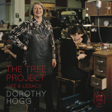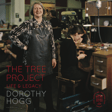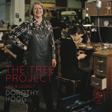
The Tree Project: Andrew Lamb & Misun Won
Andrew Lamb graduated from Edinburgh College of Art in 2000 and completed his masters at The Royal College of Art, London in 2004. He balances his time between his jewellery practice and lecturing at The Glasgow School of Art, where he is a Reader in Jewellery. Andrew, an Honorary Member of The World Crafts Council Europe, has received multiple awards for his work. Including prizes for technological innovation in the Goldsmiths’ Craft and Design Council Awards, London and the prestigious Arts Foundation Fellowship Award for Jewellery in 2010. Work has been acquired for collections including the Crafts Council, The Worshipful Company of Goldsmiths’, Aberdeen Museum & Art Gallery and The Victoria & Albert Museum.
South Korea-born jewellery designer and maker Misun Won moved to the UK and enrolled on a MA programme at the Edinburgh College of Art in 2006/2007. From 2008, she started working as a professional jewellery artist in UK. She has showed her jewellery at major UK and international craft shows including Origin, Collect, Goldsmiths’ Fair, Elements, Baltimore American Craft Show, and SOFA Chicago/New York. . She has won many awards including Goldsmiths’ Craft & Design Council award and Creative Scotland open project funding. She works as a residence artist at Coburg House Art Studio in Edinburgh.
During her time as Head of Jewellery & Silversmithing at Edinburgh College of Art, renowned jeweller and educator Dorothy Hogg MBE inspired students in the workshop and beyond. For more information on Dorothy Hogg, the project and participants, visit: www.scottishgoldsmithstrust.org/tree-project.
Hosted by Ebba Goring
Edited & Produced by Eda Obermanns
Cover Image by Shannon Tofts
Music: Precious Memories by Shane Ivers - https://www.silvermansound.com


